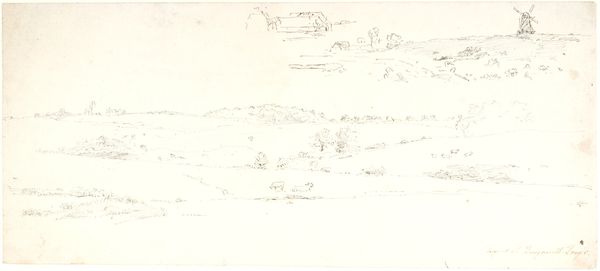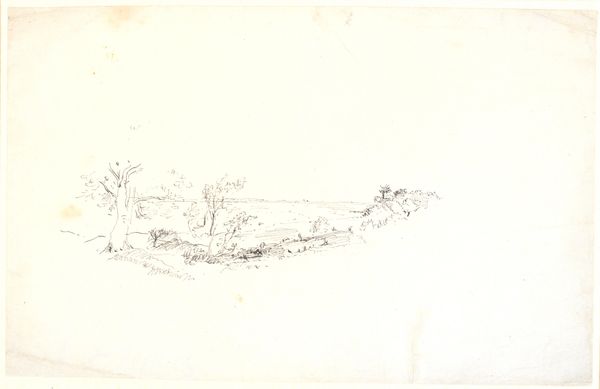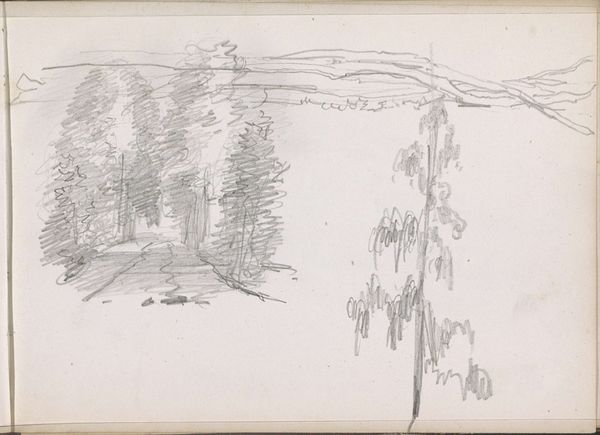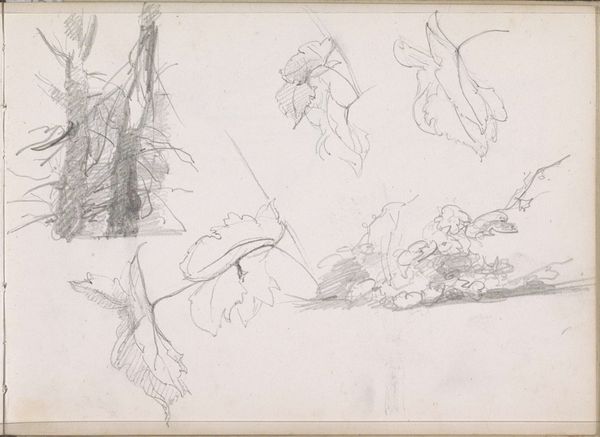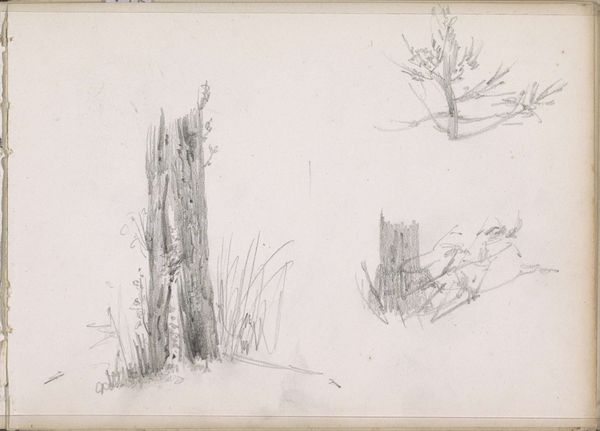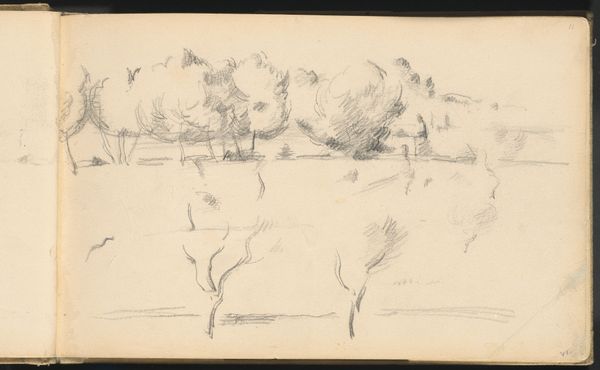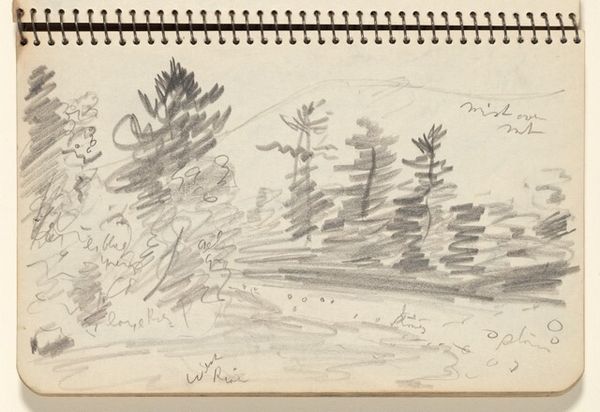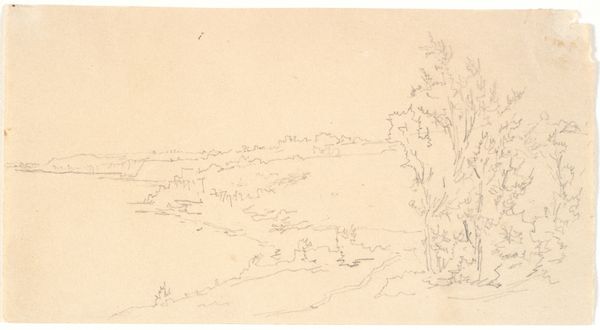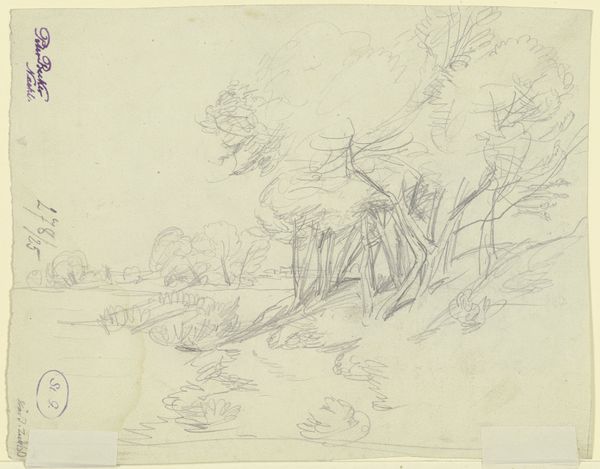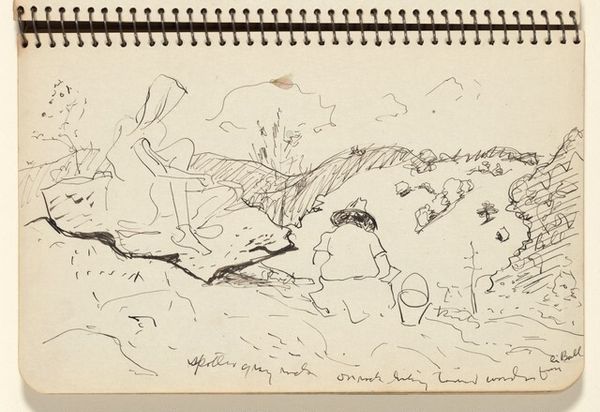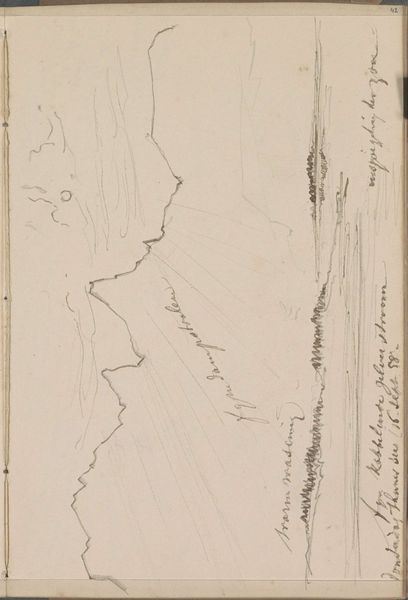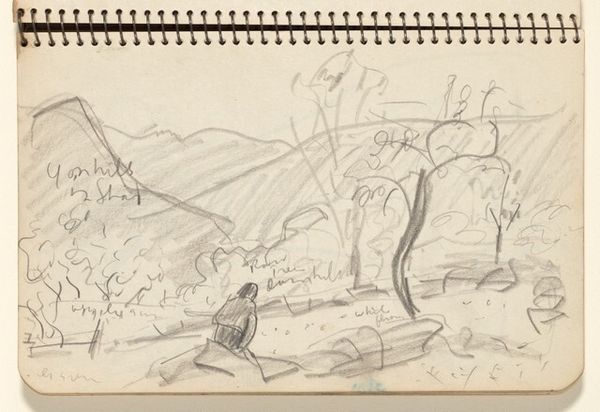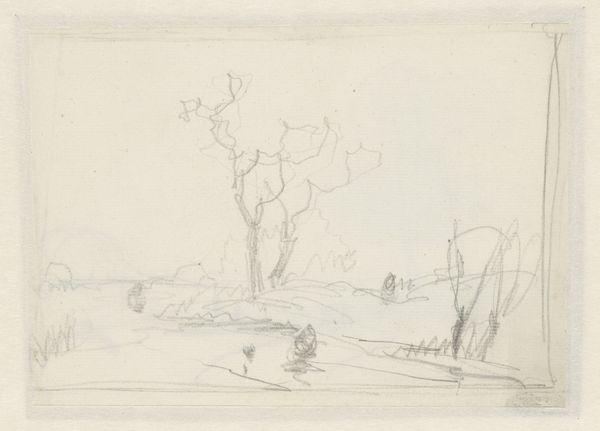
Dimensions: 5 7/8 x 8 5/8 in. (14.9 x 21.9 cm)
Copyright: Public Domain
Curator: This unassuming drawing is titled "Benjamin's Tomb, 1904," plucked from the sketchbook of Mary Newbold Sargent. It is currently held at the Metropolitan Museum of Art in New York. Editor: Immediately, the ethereal quality of the sketch stands out. There is something incomplete, transient in the thin pencil lines; you sense it's a fleeting impression rather than a solid depiction. Curator: It definitely gives off that air of transience, fitting perhaps given the subject matter. As a preparatory sketch, its place in Sargent's broader body of work sheds light on the visual culture of early 20th-century travel and artistic study. Travel was becoming democratized at that time and with the expansion of leisure, sketches, like this one, documented artists encounters with new sights and new visual cultures. Editor: It’s intriguing how those few strokes conjure palm trees and what looks like the dome of a tomb. Palms are commonly linked to life and resurrection across cultures – the ancient Egyptians, for example, thought they symbolized rebirth. A tomb juxtaposed with palm imagery becomes quite loaded with symbolic weight, especially thinking about the name. The Biblical Benjamin was connected to themes of renewal in Kabbalistic traditions. Curator: That’s an insightful observation. It is a rough preliminary composition and her use of accessible, inexpensive materials like pencil emphasizes art as something accessible, for study and documentation but also for quick impressionistic interpretation. Sargent wasn’t creating a grand finished history painting; instead, it reflects how personal travel, cultural exposure, and the act of artistic recording became intertwined in everyday experience during this era. Editor: Absolutely. And you can almost feel her capturing that moment, the sun, the light. The immediacy feels raw, more about an emotional encounter with a sacred place than a meticulous record. A reminder perhaps that sketching like this captures not only what we see but also what we feel. Curator: Exactly. It's a work about seeing and about feeling the visual encounter. Editor: Well, this has definitely altered my initial perception – seeing beneath the sketch to the potent symbolism and historical context. Curator: Indeed. Considering it as more than just an unfinished sketch changes everything. It highlights how artistic processes are rooted in evolving cultural patterns and broader networks of knowledge exchange.
Comments
No comments
Be the first to comment and join the conversation on the ultimate creative platform.
